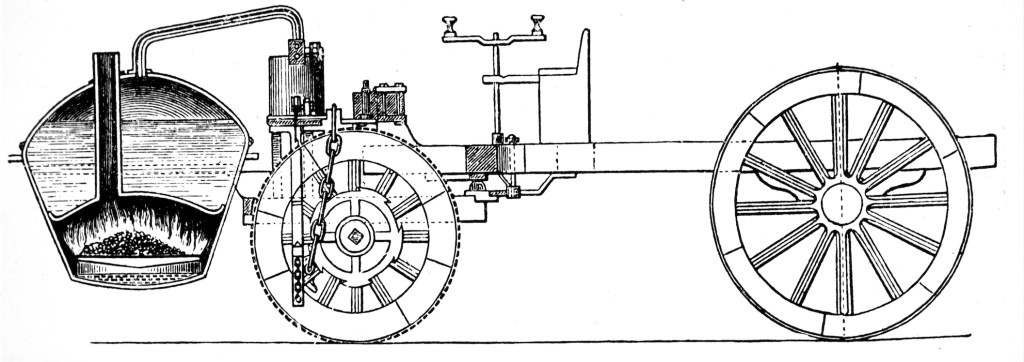
Is All-Wheel Drive Worth the Upgrade?
When we talk about cars or trucks, we always head straight for the Tim “The Toolman” Taylor grunts and want to know about power. Horsepower and torque reign supreme in the arena of “car specs people care most about,” but the driveline plays a massive role in how that power hits the road. How do we decide which driveline is the best; front-wheel drive (FWD), rear-wheel drive (RWD), or all-wheel drive (AWD)?
What does it all mean?
The driveline, or drivetrain, is the system that dictates which wheels receive power from the engine. These terms are relatively self-explanatory, but the effects of these different options can get a lot more complicated.
When we talk about front-wheel drive, we are saying that the motor connects to the front two wheels with a driveshaft pulling the car forward when the throttle is applied—fun fact: The world’s very first car was a front-wheel-drive vehicle. MotorTrend details the issues that the early “car” builders had with getting traction with these early iterations. The 1769 Cugnot Le Fardier had impressive torque but struggled with traction due, in part, to its steel-clad wagon wheels.

Rear-wheel-drive (RWD) vehicles send power to the back two wheels, which pushes the far forward as opposed to pulling it. This configuration is not always the most practical arrangement, but its often preferred by enthusiasts for more spirited driving styles.
Lastly, we have the most expensive and complicated of the driveline styles, all-wheel drive. As the name suggests, AWD cars are both pushed and pulled by all four wheels receiving power. Vehicles with this configuration are typically the best handling and the quickest accelerating production vehicles made. FWD and RWD cars can have trouble using all of the motor’s power by lacking traction with only two wheels. AWD cars, on the other hand, having four points of contact, put down power far more effectively, making them generally perform better, but also cost the most.
Driveline efficiency
Every layout has its advantages and disadvantages. FWD vehicles tend to be the most efficient and practical, depending on what you need. FWD is tied for first place with RWD for fuel-efficiency and interior space. These drivelines require drive shafts to deliver power from the engine to the wheels. The fewer shafts and connectors to those shafts there are, the less wasted energy there is.
As MotorTrend nicely points out, engines make rotational energy. The longer the energy has to travel, and the more directions it has to travel in, the less efficient it becomes. Now, with the EVs putting individual motors on each wheel, that style of an all-wheel-drive vehicle doesn’t apply.
Both RWD and FWD drivelines can provide more opportunities for room inside the cabin than AWD vehicles can. AWD drivelines take up more room underneath the car. The floor of FWD and RWD vehicles can be flat, allowing the vehicle to dedicate more space to hauling people and things.

Lastly, FWD has the potential for better straight-line traction because of the weight distribution of most vehicles. With few exceptions, cars and trucks tend to have their engines mounted at the front of the vehicle. In FWD vehicles, this puts the heaviest part directly over the wheel, getting power, which increases traction. The same can be said for mid-engined or rear-engined cars when applicable. In the corners, the weight distribution begins to work against the FWD cars, in particular.
Which one is the most fun?
Driving style is really where the rubber meets the road (excuse the pun). front-wheel drive, rear-wheel drive, and all-wheel drive cars feel significantly different from one another due to where the power goes. FWD cars have a unique disadvantage in this category because of those pesky laws of physics.
If you find yourself engaged in a bit of spirited driving, you might find that FWD cars might plow diagonally toward the edge of the road if in a sharp corner. This fun feature is called understeer. This problem can be challenging to fix if you aren’t expecting it and severely limits how fast a driver can take a corner.
RWD drive cars exist on the other end of the spectrum. If you power through a low traction corner in a RWD car, you are likely to experience something called oversteer. Oversteer is when the cars rear tires break traction allowing the back end to slide around sideways while still moving forawrd.
Controlling oversteer has become a motoring sport in and of itself called “drifting.” Oversteer can be a real hoot if you are in a controlled environment and know how to control it. Although fun, it is far from the fastest way to go around a corner and a great way to burn up a set of tires.
This is where the all-wheel-drive cars come into their own. AWD offers the fastest and most controlled cornering and acceleration (in most cases). The performance capabilities, as well as cost to build the more sophisticated system, is what typically makes AWD a pricier option.
Because of the added points of traction, AWD vehicles allow for a more versatile driving experience by opening up off-road options. On lower-traction surfaces like sand, gravel, dirt, and snow, having all-four wheels driven drastically improves handling and traction. It is important to note that all of these scenarios depend heavily on tire choice for your driving environment.
Is AWD worth it?
Sorry to do it you, but – yes and no. It all comes down to what you want and need. For a practical, fuel, and cost-efficient ride, front-wheel-drive is probably the option that makes the most sense. If you are simply interested in thrills and going sideways, the RWD might be the one for you. AWD hits an extremely exciting and practical mark for being more versatile in various terrain and weather conditions, while also having the most potential for better control while running through the twisty roads. Choose your own adventure.



